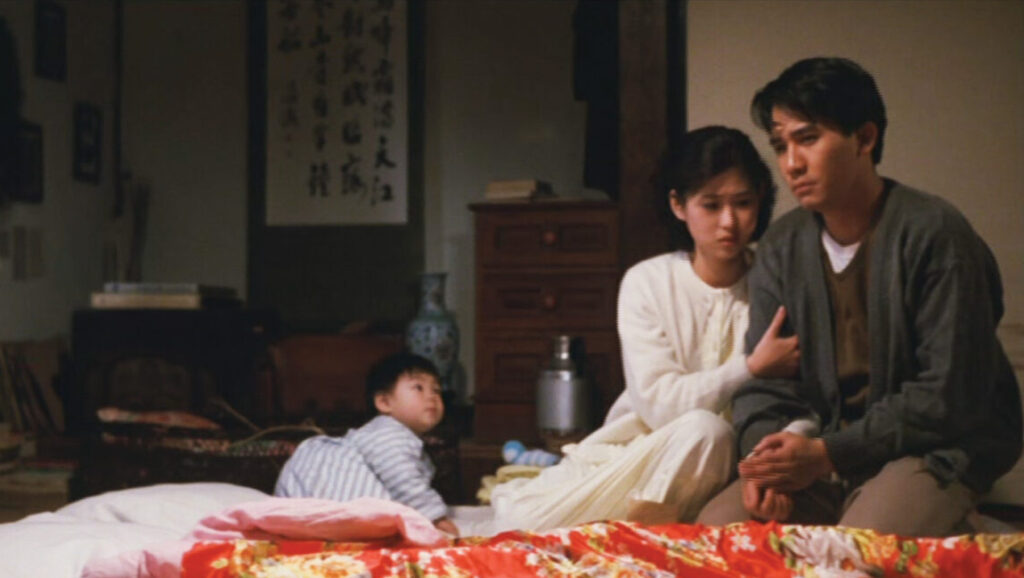If A City of Sadness represents Taiwanese director Hou Hsiao-hsien’s greatest achievement to date — an assessment that its Venice Golden Lion and long-standing reputation would seem to support — this is in part because Hou’s oblique, elliptical approach to narrative creates an astounding frisson with the film’s epic historical backdrop. A City of Sadness follows the travails of the Lin family during the “White Terror” years, a time when the Kuomintang (KMT) suppressed real and imagined dissent or opposition among the populace of Taiwan. But this is no lush, monumental period-piece in the vein of, say, Luchino Visconti. Instead, the drama proceeds in ritualized repetitions; it’s glimpsed in truncated snatches and observed from remote vantages. As the film’s overlapping strands of narrative fade in and out over a captivating two-and-a-half hour runtime, musical motifs recur, shrouding the images in the hazy ambiance of memory. Hou’s shooting style, which favors long takes and master shots in order to preserve the unity of cinematic space, is by now well-known — seen in everything from the opium dens of 1998’s The Flowers of Shanghai to the palatial vistas of 2015’s The Assassin. But it retains an air of mystery; his practice and methodology is such that even a small pocket of cinematic time somehow feels boundless and depthless.
Accumulates in force precisely because it methodically, almost perversely resists the flow of conventional drama, because instead of subordinating action to symbolism or historical signification, it gives genuine weight to the rites of life and death.
The immediate impression of A City of Sadness is desultory and remote, yet the film is also supremely enveloping, ultimately even moving — and all the more so for the way Hou submerges its plangency, only letting emotions rush to the surface at key moments. (An unknown figure’s declaration to “face the world without shame” provides a reckoning equal to that of any family tragedy.) Throughout, Tony Leung’s deaf photographer — the youngest brother of the Lin family — takes on a (literally) restorative role. Documents and film negatives fill gaps in the narrative, while diaries and written conversations act as historical annotations. Like the key image of a young boy’s stamp collection in 1985’s A Time to Live, a Time to Die, the impression we get is of images, of entire lives, archived into memory. A City of Sadness accumulates in force precisely because it methodically, almost perversely resists the flow of conventional drama, because instead of subordinating action to symbolism or historical signification, it gives genuine weight to the rites of life and death. A fundamental sense of being, of feeling, comes first; then the weight of history comes crashing down.
Part of Kicking the Canon – The Film Canon.


Comments are closed.